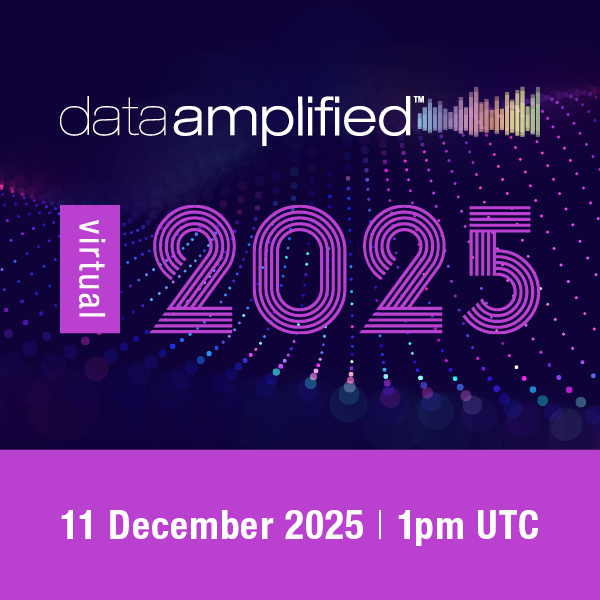AI and XBRL: New Horizons in Regulatory Data Analysis

This guest opinion piece is the first in a series from Björn Fastabend, bringing us a regulator’s perspective alongside a wealth of experience in digital reporting. Björn is head of the XBRL collection and processing unit at BaFin, Germany’s Federal Financial Supervisory Authority, where he supervises all related activities and leads the implementation of strategic initiatives. He is also a member of XBRL International’s Board of Directors, and previously chaired our Best Practices Board.
The views and opinions expressed in this publication are those of the author. They do not purport to reflect the opinions or views of BaFin.

Grappling with information overload
In our Digital Age, the sheer volume of information available is becoming overwhelming. It is increasingly difficult to grasp the data we have, and to glean the insights we need.
This is a growing challenge for regulators all over the world. We need – and are legally mandated – to collect and interpret information from supervised entities. Most regulators are requesting and receiving increasing amounts of data, while staff capacity to manage and analyze that data remains limited.
Business Intelligence (BI) tools play a key role in turning raw data into useful information. One drawback, however, is that in general only trained analysts are able to work effectively with these tools, since a certain level of technical understanding is required. And without proper tools, the insights we need are simply unattainable.
As the old saying in computer science circles goes, “garbage in = garbage out”. Solid analysis is only possible with high-quality data. Regulatory data is commonly processed and disseminated into a database for further analysis. It is especially helpful if this data is accompanied by semantic information. That is where XBRL shines, providing structure and context for reported data, with quality underpinned by built-in validation rules.
The rise of AI, specifically large and small language models (LLMs and SLMs), could significantly simplify analysis of XBRL data. Using AI chatbots in conjunction with BI tools could help supervisors interpret data more easily, even without technical training, since it’s easy to interact with chatbots using natural language. By leveraging AI we as regulators could significantly boost our analytical capabilities.
XBRL and AI: A Natural Partnership
XBRL and AI are natural partners, with the potential to achieve results far beyond what either technology can do alone. While AI systems are powerful analytical tools, their effectiveness is significantly enhanced when working with structured, semantically rich data like XBRL.
XBRL data is always structured according to an underlying taxonomy (or taxonomies), which can be stored in a database alongside reports, giving AI the semantic information to precisely locate and define each piece of data. My colleague Gerhard Gerlach coined the phrase: “Provide an AI with an XBRL taxonomy and change the analysis from guessing to knowing!” This tight relationship between taxonomy and reported data is fundamental to effective AI analysis.
While other structured formats like XML and JSON offer some analytic benefits, these are limited. An XML document, for example, must be correctly formatted against a schema. An XBRL taxonomy goes further: it is like a detailed dictionary for reporting concepts, providing meanings, additional properties and relationships between facts. XBRL also requires consistency – with, for example, all reports using the same standard names for each concept – a crucial component of comparability.
XBRL’s built-in validation rules provide another crucial advantage for AI analysis. These rules not only ensure essential data quality but also provide additional semantic context. An AI can derive valuable information from, for example, validation rules that specify relationships, such as A + B must equal C.
The power of the partnership between AI and XBRL becomes particularly evident in comparative analysis. XBRL data is highly comparable: since each piece of information is digitally tagged, AI models can select precisely equivalent facts from different reports. This makes XBRL particularly useful for peer or time-series analysis. When combined with AI, leveraging its capacity to process large volumes of information, it becomes easy to make comparisons even across thousands of reports.
Unstructured data – in, for example, PDF format – requires AI systems to infer meaning and make assumptions, which can result in less accurate responses. XBRL, in contrast, provides exactly what an AI system needs to make sense of the data without guesswork. The combination of data quality, semantic richness and standardized structure makes XBRL truly the perfect complement to AI.
Breaking Down Barriers to Analysis
The integration of AI capabilities with XBRL data opens exciting new possibilities for regulatory analysis. Using a chatbot, even a non-technical supervisor is able to interact with the data using natural language, and to discuss and refine results, smashing conventional barriers. This democratization of data access represents a fundamental shift in how we conduct regulatory supervision.
The capacity to traverse large data sets and derive intricate meanings, identifying patterns or anomalies, is a further core strength of AI. The accuracy of these large-scale comparisons is reinforced by XBRL.
Another fundamental advantage of AI is its ability to handle open-ended questions and discover unexpected insights. BI tools excel at analyzing specific, predefined metrics, but a question such as “What is the most significant change in the data for company XYZ in the past 3 years?” is difficult to implement. An integrated approach lets us use AI as an explorative tool, offering suggestions on points of interest to analyze further. Those findings are then verified using BI tools, thus leveraging the strengths of both.
Of course, in a regulatory setting, high data integrity and transparency are critical. Any decision made by a regulatory agency must be defensible in court, requiring traceability and evidence of how it was made. While AI tools are currently not able to provide this kind of legally accepted analysis, they serve as a powerful complement to traditional BI tools, enabling deeper insights and more efficient analysis processes.
Reimagining Regulatory Analysis
In a time of growing challenges, this new approach to analysis could significantly strengthen the capabilities of regulators. More and more granular data is being sought, and more detailed and more insightful analysis demanded. It is essential that we update data processing and analytical capabilities accordingly. This is where AI excels. AI systems are designed to handle vast data sets, and have capabilities that vastly exceed those of humans alone. Introducing AI into the regulatory analysis process is a logical next step.
XBRL brings essential accuracy to complement AI’s analytic power, with structured, semantically enriched data forming a basis for incisive analysis. XBRL data can be explored using AI to generate novel insights that are then verified and made legally sound using BI. This combination offers a “best of all worlds” approach to regulatory data analysis.
This article is the first in a series exploring how we can use AI to enhance regulatory analysis while maintaining rigor. In the upcoming articles, I will delve deeper into practical applications, address implementation challenges, and explore future possibilities.






